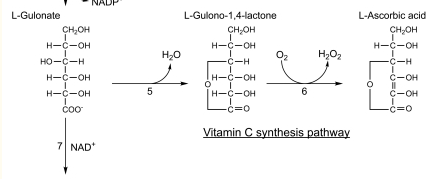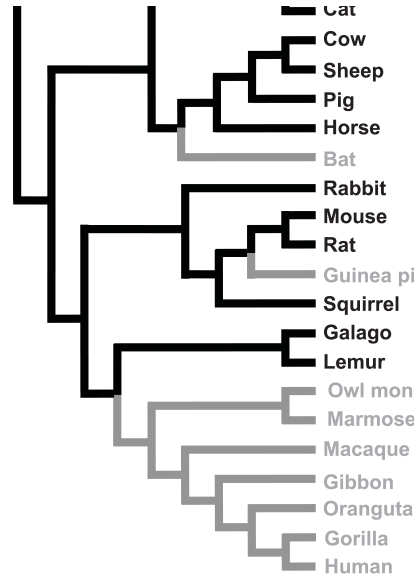
All posts by admin
Cold Storage Requirements for Covid Viruses
https://www.gcca.org/sites/default/files/GCCA-COVID-19-version1pt0.pdf
Practical Food Safety

The Role and Requirements of Vitamins and Minerals in Humans.
.
Your body depends on six groups of essential nutrients, and each is vital for growth, development and continuing health.
Vitamins. Vitamins are organic — derived from living matter — compounds your body needs in small amounts to function properly. …
Minerals. …
Protein. …
Fats. …
Carbohydrates. …
Water.
Your body makes many of the nutrients, known as non-essential, that it needs to carry out its functions. Some nutrients, however, can’t be made rapidly enough — or at all — to meet daily needs; these are called essential nutrients.
They must be obtained from outside sources, such as food or supplements. Your body depends on six groups of essential nutrients, and each is vital for growth, development and continuing health.
Vitamins
Vitamins are organic — derived from living matter — compounds your body needs in small amounts to function properly. Because your body can’t make these nutrients, you must get them from food or supplements. Vitamins play an important role in digestion, and they’re crucial for body function regulation. Vitamins exist in two forms — fat soluble, which include vitamins A, D, E and K, and water soluble, which include the B-complex vitamins and vitamin C. To consume a wide variety of vitamins, include fresh fruits and vegetables, whole grains, low-fat milk, fish and eggs in your daily food plan.
Minerals
Minerals are inorganic compounds that your body is unable to manufacture. They help regulate body processes, and each one plays a particular role in your body’s proper functioning. Your diet must provide 16 minerals to maintain optimum health. They come in two categories: Macro minerals — sodium, potassium, chloride, calcium, phosphorus, magnesium and sulfur — are needed in larger quantities by your body, while trace minerals — iron zinc, iodide, selenium, copper, fluoride, chromium, molybdenum and manganese — are required in smaller amounts. Include mineral-rich foods like fruits, vegetables, whole-grains, nuts and fortified low-fat milk in your diet.
Protein
Protein is a component of every cell, and your body uses it to build and repair tissues. Protein is made from amino acids, but your body is unable to produce all of them. Dietary protein, therefore, becomes the main source of these essential amino acids. Fish, lean meat, poultry, eggs and cheese are complete proteins, meaning they contain all the necessary amino acids. Incomplete proteins, such as grains, legumes, nuts and seeds, should be eaten in a wide variety to ensure you consume all necessary amino acids
Fats
Your body requires monounsaturated and polyunsaturated fats, including omega-3 fatty acids, to maintain optimal health. Monounsaturated and polyunsaturated fats improve blood cholesterol levels, reduce inflammation and stabilize heart rhythms, says Harvard School of Public Health. Specifically, omega-3s are necessary for proper blood clotting and development of your brain’s cell membranes. These fatty acids also help protect against heart disease, cancer and stroke. Include foods that contain good fats, such as salmon, tuna, olive oil, canola oil, flaxseed, walnuts and almonds in your daily food plan.
Carbohydrates
Your body doesn’t manufacture carbohydrates, but they are broken down during digestion to provide fuel for physical activities and energy for proper body functions. Your nerves, muscles and brain depend on the energy provided by carbohydrates. According to Harvard School of Public Health, processing whole grains into refined foods, including white bread, sweets and white rice, removes minerals, fatty acids, as well as fiber, which results in foods that produce higher spikes in blood sugar than whole grains. Choose complex carbohydrates such as whole-grain breads, pasta and cereals, nuts, beans, lentils, peas and potatoes.
Water
Water makes up more than 60 percent of your body weight, according to MayoClinic.com. Your body’s daily fluid requirement exceeds what your body can make through processes such as digestion. Because you must supply your body with enough water to keep it functioning properly, it’s considered an essential nutrient. Water carries other nutrients and oxygen to cells, transports wastes away from cells, regulates body temperature and helps keep muscles and skin toned. Although individual water requirements vary, MayoClinic.com recommends drinking at least eight 8-ounce glasses of fluid a day.
Humans cannot synthesize vitamins A, B1 (thiamine), B2 (riboflavin), B5 (pantothenic acid), B6 (pyridoxine), B7 (biotin), B9 (folate), B12 (cobalamin), E and K but are able to synthesize some vitamin B3 (niacin) and D.
Vitamins are organic compounds which have to be obtained from the diet, either because an organism does not have the enzymes necessary to synthesize them or because it cannot produce them in sufficient quantities [1]. Humans cannot synthesize vitamins A, B1 (thiamine), B2 (riboflavin), B5 (pantothenic acid), B6 (pyridoxine), B7 (biotin), B9 (folate), B12 (cobalamin), E and K but are able to synthesize some vitamin B3 (niacin) and D. The last vitamin required by humans, vitamin C (ascorbic acid), is a special case in that this organic compound is synthesized by the large majority of vertebrate and invertebrate species. Interestingly, the vertebrate organ used to synthesize vitamin C changed twice from the kidney to the liver during evolution, once in birds and once in mammals. Whereas vitamin C is produced by the kidneys of fishes, amphibians, reptiles, and older bird orders, it is produced by the liver of more recent bird orders and of mammals. This switch to a larger organ in more active species has been interpreted as being the result of selective pressures to maintain biochemical homoeostasis under more stressful conditions. This is reflected by the fact that the human daily recommended intake for vitamin C (60 mg) is the highest among all vitamins.
Vitamin C is a water-soluble compound with anti-oxidant properties that protects living organisms against oxidative stress. It is also essential for collagen synthesis, which is why insufficient amounts of this vitamin lead to scurvy. Its other functions include the synthesis of carnitine, neurotransmitters and the catabolism of tyrosine, among others.
Yeasts, plants and animals use different pathways to synthesize vitamin C. Yeasts synthesize D-erythroascorbate from D-arabinose, whereas plants synthesize vitamin C from GDP-D-mannose and animals synthesize vitamin C from UDP-D-glucuronate shows the vitamin C biosynthesis pathway in animals starting from D-glucose-1-P.
Coenzyme Q10 helps generate energy in every cell in your body. This essential element is a powerful antioxidant and anti-inflammatory that defends cells from damage caused by harmful free radicals. … CoQ10 is produced in the human body. But levels of CoQ10 decrease as we age.
A common belief is that because our bodies lack chlorophyll, we cannot convert sunlight into energy directly. However, science is discovering something else. After eating greens, we have chlorophyll in our bloodstream, and this chlorophyll may react with sunlight that penetrates through our skin. When this happens, it seems our body is able to create Coenzyme Q10 (CoQ10) naturally.
Vegetables with the highest sources of vitamin C include:
Broccoli, Brussels sprouts, and cauliflower.
Green and red peppers.
Spinach, cabbage, turnip greens, and other leafy greens.
Sweet and white potatoes.
Tomatoes and tomato juice.
Winter squash.

Sorry to call your vitamin salesman a liar (They are good used car salespersons), but your body cannot possibly use more than 100 mg. of the co-enzyme vitamin c. Co-enzyme means that it is not the primary enzyme of a protein production, but is required as well to produce the protein. 150 mg. a day is required if you smoke or are under a lot of stress. It is total bull hockey that a human could use or need 1,000 mg. of vitamin c a day. This is from reputable scientific research, not people getting paid to say this.

Get all eight B vitamins from a variety of foods:
Whole grains (brown rice, barley, millet)
Meat (red meat, poultry, fish)
Eggs and dairy products (milk, cheese)
Legumes (beans, lentils)
Seeds and nuts (sunflower seeds, almonds)
Dark, leafy vegetables (broccoli, spinach, kai lan)
Lisa gene Cox
Texas Best Food Service Training
February 2, 2019
A Case for using Block Chain Technology for fulfulling the goals of the USDA FSMA

Following the introduction of the U.S. Food and Drug Administration Food Safety Modernization Act (FSMA) in 2011, it became increasingly clear that food manufacturers and distributors actively ensure contaminants in the food supply are prevented. This ‘dream’ document contains many ideas on logging the supp;y chain. I personally think that this would be an excellent use of block chain technology because each step in the supply chain could be permanently available to easily track down sources of food contaminants.
Overview
A lot of this is record keeping and availability of those records. The FSMA states:
Any food that could be a reasonable cause of adverse health consequences, sickness, or death to humans or animals
Each food industry entity (EXCLUDING FARMS AND RESTARUANTS), who manufacture, process, packs distributes, resells, holds, or imports such foods, Shall at the request of an official with appropriate credentials, and a written notice to such
persons
Make access available and to copy all records related to such foods and any other food that could be could be applicable, and the foods themselves.
This applies to all records relating to manufacturing, processing, packing, distributing, receipt, holding, or importation of such foods, or records held by any party involved in this process in any form or any location.
Despite these efforts, great strides in food manufacture ring and distribution have now seen great success. The main element of the USDA FSMA are to consider other source of contamination (other than physical, chemical, and biological).
Such The operator shall identify and evaluate known or reasonably foreseeable hazards that may be associated with the facility, including biological, chemical, physical, radiological hazards, natural toxins, pesticides, drug residues, decomposition, parasites, allergens, and unapproved food and color additives, and a written analysis of these hazards. (added in the FSMA).
Preventive Controls
The operator shall identify and implement preventive controls, including at critical control points, if applicable, to provide assurances that hazards identified in the hazard analysis previously concluded will be significant in minimizing, preventing, and addressing the food manufactured, processed, packaged, or held by such facility and will not be adulterated, mis-branded or mislabeled.
A common point of these contaminations stems from the distribution chain, identified post-outbreak through a comprehensive record review. So, if regulations on the front-end of the food supply can’t identify food contamination before it gets distributed to consumers, what can be done? The answer is surprisingly simple—food suppliers must ensure they have an information management system in place that can comprehensively and easily track all records on the back-end.
Records and record availability
Intelligent information management is especially crucial for food manufacturers and distributors to maintain high-quality products—as well as a good reputation and track record of trust with suppliers and customers.
These resources must be readily available, especially depending on the amount and type of documents needed based on a supplier’s risk level. After all, food manufacturers and distributors aren’t only in the business of food ingredients—we’re also in the business of information management to maintain our core principles of quality, truth, and service.
Throughout the industry, it’s not uncommon to track documents and business processes manually in a spreadsheet, with files saved across multiple network folders. Remember, contamination stems from the distribution chain. If documents, resources, and processes aren’t easily accessible and referenceable, the challenges of ensuring food safety increase significantly. Again I think that a universally mandated block chain site be erected and its use required of all manufacturers and distributers.
We should ask these questions in any document flow:
• Could any document be found easily, regardless of where it’s stored?
• Could it protect sensitive information while being readily accessible to the right people at the right time?
• Can critical supplier qualification tasks be defined in a workflow, preventing the approval of a supplier until a complete evaluation has been performed?
• Can these review tasks be set to recur at defined intervals, to ensure that the supply chain is periodically (and thoroughly) reviewed?
With an intelligent information management solution implemented throughout our quality, documentation and product management departments, we’ve been able to process requests much faster by gaining visibility to the process. There is now no need for us to maintain a separate spreadsheet on the process; we’re able to get all requested, up-to-date information available into our customers’ hands. For expiring documents, we have visibility into when they expire, and can take a proactive approach to renewing the information. Again, block chain techology could accomplish all these goals with ease,.
While workflow was our primary focus, other important information management elements weren’t—and should never be—neglected, including security, automation, and reducing regulatory risk. These details can make or break your customer and suppliers’ trust and should be carefully considered when thinking through organizing one’s resources.
In short, you may be wondering, “Is proper information management the answer to preventing future food contamination?” While most recalls are a result of poor food safety practices that occur in the distribution chain, it’s difficult to say it’ll be fully stymied, especially following the food preparation phase. However, every food processing organization has the option to do its due diligence to protect the population from devastating nationwide foodborne illnesses. By implementing an intelligent information management system on the back-end to proactively and automatically handle time- and information-sensitive documents for suppliers and customers, we’d all be one step closer to saving the food industry, economy, and, most importantly, lives each year.
I have never heard of a better use of block chain technology.
References
1. www.cdc.gov/foodsafety/foodborne-germs.html.
2. www.cdc.gov/foodsafety/cdc-and-food-safety.html.
3. www.cdc.gov/foodsafety/outbreaks/multistate-outbreaks/outbreaks-list.html.
4. www.cdc.gov/foodsafety/outbreaks/investigating-outbreaks/index.html.
By Lisa gene Cox
Texas Best Food Services Training
January 2019
